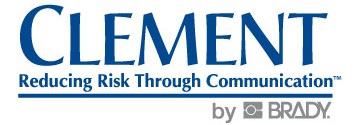Rules to Prevent Forklift-Related Accidents
Forklifts are used in numerous work settings, primarily to move materials. Each year in the U.S., nearly 100 workers are killed and another 20,000 are seriously injured in forklift-related incidents. Forklift overturns are the leading cause of fatalities involving forklifts; they represent about 25 percent of all forklift-related deaths.
OSHA’s forklift standard requires operator training and licensing, as well as periodic evaluations of operator performance. The standard also addresses specific training requirements for truck operation, loading, seat belts, overhead protective structures, alarms and maintenance of industrial trucks. Refresher training is required if the operator is observed operating the truck in an unsafe manner, is involved in an accident or near miss, or is assigned a different type of truck.
OSHA requires that powered industrial trucks be examined before being placed in service. They must not be placed in service if the examination shows any condition adversely affecting the safety of the vehicle. Such examination must be made at least daily. When industrial trucks are used around the clock, they must be examined after each shift. When defects are found, they must be reported and corrected.
Those who operate or work near forklifts should take these steps to protect themselves:
- Do not operate a forklift unless you have been trained and licensed to do so.
- Use seat belts if they are available.
- Report any incidents that occur to a forklift during your shift.
- Do not jump from an overturning, sit-down type forklift. Stay with the truck, holding on firmly and leaning in the opposite direction of the overturn.
- Exit from a stand-up type forklift with rear-entry access by stepping backward if a lateral tipover occurs.
- Use extreme caution on grades and ramps.
- On grades, tilt the load back and raise it only as far as needed to clear the road surface.
- Do not raise or lower the forks while the forklift is moving.
- Do not exceed the weight capacity of the forklift.
- Forklifts should be driven at a speed slow enough to ensure a safe stop.
- Slow down and sound the horn at cross aisles and other locations where vision is obstructed.
- Look toward the path of travel and maintain a clear view.
- When dismounting from a forklift, set the parking brake, lower the forks or lifting carriage, and neutralize the controls.
- Do not drive up to anyone standing in front of a bench or other fixed object.
- Whenever a truck is used to elevate personnel, secure the elevating platform to the lifting carriage or forks of the forklift.

